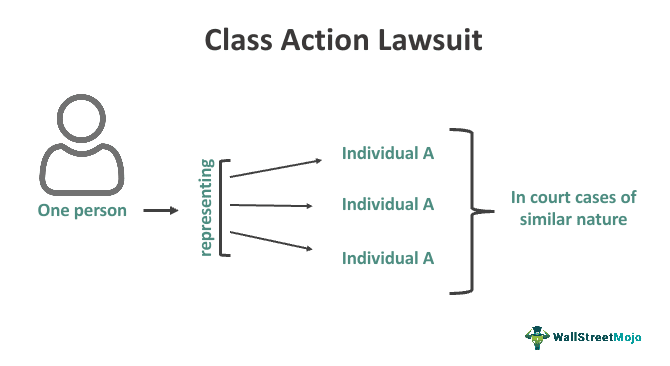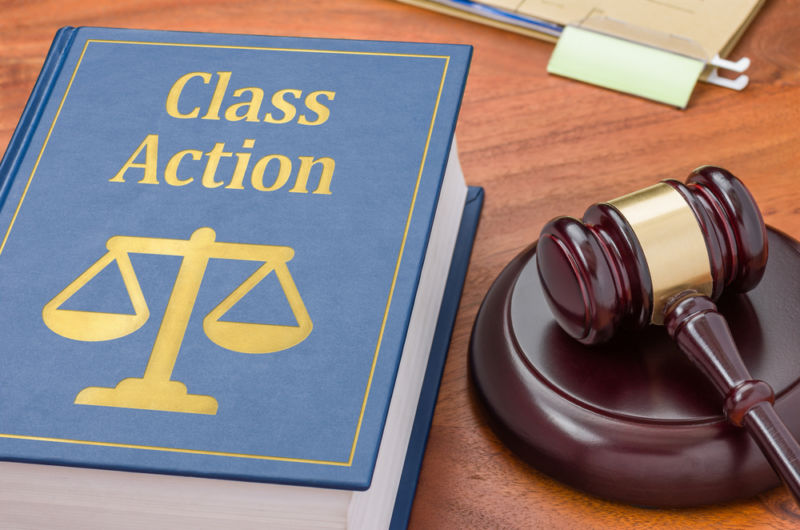Class Action Lawsuits 101: What You Required to Learn About Legal Actions
Class Action Lawsuits 101: What You Required to Learn About Legal Actions
Blog Article
Key Elements to Take Into Consideration in Course Action Suits: Insights for Lawyers
Course activity claims can be tough and complicated for legal representatives to browse. Comprehending these aspects and their implications is crucial for attorneys intending to successfully represent their clients in course action legal actions.
Class Qualification Demands
To continue with a class activity suit, attorneys should navigate via a series of rigid class certification demands. Class qualification is an important phase in the litigation procedure that determines whether a group of complainants can be certified as a class and proceed with their claims jointly. These requirements offer to ensure that course actions are reliable and ideal systems for fixing conflicts including numerous complainants.
While there is no fixed numerical limit, courts normally consider a class with even more than 40 members as adequately countless. Furthermore, commonness is another important aspect in course qualification.
Adequacy of depiction ensures that the agents will rather and appropriately protect the rate of interests of the course participants. A course activity must also please the demand of prevalence, meaning that a course action is a premium approach for adjudicating the conflict compared to other offered techniques.
Navigating through these class certification requirements can be intricate and tough for lawyers. However, understanding and conference these demands are vital to effectively pursue a course action suit in support of a team of plaintiffs.

Commonness of Insurance Claims
The next crucial aspect to consider in the class certification process is the commonness of cases amongst the complainants. Commonality refers to whether the class participants share similar lawful problems and inquiries of reality that can be resolved collectively. To put it simply, it is required to establish if there prevail concerns of regulation or truth that are main to the lawsuits and that predominate over any type of individual issues.
To develop commonness, the plaintiffs must demonstrate that there are legal or accurate problems that are typical to the whole class. This can be attained by identifying a typical program of conduct or a common legal theory that underlies the cases (Class action lawsuit). The existence of common concerns is vital because it advertises judicial efficiency and economic climate by enabling a solitary decision to settle the problems for the entire class
However, it is important to keep in mind that the commonness need does not require that all the individual claims equal. If there are still typical inquiries that bind the class with each other., distinctions in problems or private circumstances do not always defeat commonness.

Damages Calculations
When computing damages in class action claims is the accurate assessment of monetary losses sustained by the class participants,One crucial element to think about. In order to identify the ideal quantity of settlement, it is needed to review the degree of harm suffered by each person within the course. This can be a complex task, as it calls for a thorough evaluation of numerous elements, such as the nature and period of the harm, the financial influence on the impacted individuals, and any kind of other relevant factors to consider.
When evaluating financial losses, it is very important to think about both the direct and indirect problems experienced by the class members. Direct damages refer to the actual out-of-pocket expenses incurred as an outcome of the defendant's activities. These might include medical expenses, property damage prices, or any kind of various other concrete financial losses. On the other hand, indirect damages include the abstract losses that are more hard to evaluate, such as emotional distress, loss of online reputation, or reduced high quality of life.
To compute problems accurately, legal representatives need to gather extensive evidence, consisting of financial documents, expert opinions, and testimonies from the course participants. They might additionally require to engage economic and economic professionals that can give insights right into the long-term financial implications of the damage endured.
Settlement Negotiations
During settlement arrangements, lawyers must participate in mindful and critical conversations to reach a mutually agreeable resolution for all celebrations entailed in the course action claim (Class action lawsuit). Negotiation arrangements are a crucial stage in the litigation procedure, where the parties attempt to get to a compromise without discover this info here mosting likely to trial. These negotiations call for lawyers to employ their arrangement skills, legal competence, and understanding of the instance's weak points and staminas
One crucial variable to think about during settlement arrangements is the prospective dangers and prices connected with continuing to trial. Lawyers should thoroughly review the likelihood of success at trial and consider it versus the prospective advantages of a negotiation. They need to also take into consideration the potential time and resources that would certainly be needed to undergo a trial, as well as the possible unfavorable attention that can result from a public trial.
One more essential factor is the passions and problems of the class members. Attorneys require to understand what the class participants really hope to go to my site achieve through the lawsuit and just how a settlement can address their grievances. By considering the course members' perspectives and seeking advice from them throughout the arrangement process, lawyers can better promote for their rate of interests and make sure that any type of negotiation reached is satisfactory and reasonable.
In addition, attorneys have to be prepared to negotiate with the opposing event and their legal representatives. This calls for a deep understanding of the staminas and weak points of both sides' disagreements and a determination to compromise. Skilled arbitrators can take advantage of this understanding to find commonalities and craft creative services that satisfy the demands of all events involved.
Effective Customer Representation
To efficiently represent their clients in course activity suits, attorneys have to have a thorough understanding of the situation and carefully advocate for their you can try these out clients' passions. Effective customer depiction requires lawyers to establish open lines of communication and maintain a solid attorney-client relationship throughout the entire litigation procedure.
Firstly, attorneys have to completely evaluate the facts, lawful issues, and prospective threats related to the case. This consists of performing a thorough investigation, reviewing relevant papers, and seeking advice from with experts if necessary. By obtaining a deep understanding of the situation, legal representatives can establish a calculated approach tailored to their clients' needs and purposes.
Additionally, legal representatives must actively advocate for their customers' passions during all phases of the lawsuit. This entails drafting convincing legal arguments, performing comprehensive research, and providing engaging proof to support their clients' cases. Lawyers ought to likewise remain informed concerning current developments in class activity regulation and utilize this knowledge to enhance their clients' settings.
Along with legal advocacy, effective client representation entails giving regular updates, answering concerns, and addressing any kind of problems that clients may have. Legal representatives must be aggressive in maintaining their clients educated regarding the progression of the case and any kind of significant advancements that might impact the result.
Inevitably, effective client depiction calls for attorneys to be thorough, receptive, and committed to safeguarding their clients' interests and civil liberties. By embracing a client-centered strategy, legal representatives can maximize the possibilities of achieving a positive end result in course activity legal actions.
Conclusion
Finally, legal representatives associated with course activity legal actions should think about crucial elements such as class certification requirements, the commonness of claims, damages estimations, settlement arrangements, and efficient customer representation. By carefully addressing these aspects, lawyers can improve their opportunities of success in course action legal actions and make sure that the passions of their customers are protected.
Understanding these aspects and their ramifications is critical for legal representatives intending to successfully represent their clients in class activity claims.To continue with a course activity legal action, lawyers must navigate through a collection of rigid class certification demands. Class qualification is a vital phase in the lawsuits process that figures out whether a team of complainants can be certified as a course and continue with their insurance claims jointly. A course action have to additionally satisfy the need of supremacy, indicating that a course activity is a remarkable method for adjudicating the conflict compared to other offered approaches.
One vital aspect to think about when calculating problems in course action lawsuits is the precise evaluation of financial losses sustained by the class members.
Report this page